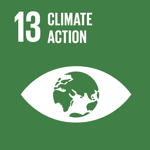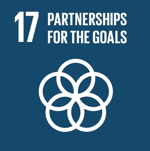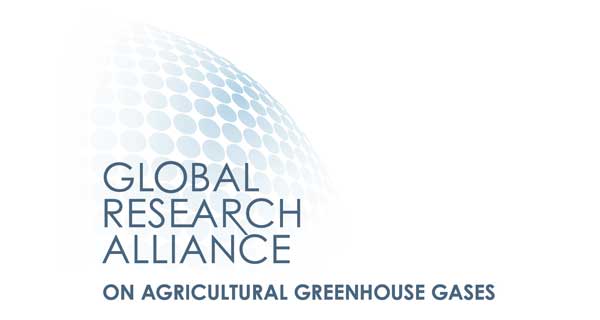Methane and nitrous oxide emission quantification in grazing cattle
 Uruguay
Uruguay
 Argentina
Argentina
 Chile
Chile
 Colombia
Colombia
 Dominican Republic
Dominican Republic
Executive Summary
Global warming caused by greenhouse gas emissions (GHG) is a major environmental concern. Countries that have ratified the Kyoto Protocol are required to submit periodic reports to the Intergovernmental Panel on Climate Change (IPCC) about their GHG emissions and climate change adaptation and mitigation programs. The countries involved in the project carry out their emission inventories based on estimates that use default emission factors recommended by the IPCC for all agricultural soils worldwide. The use of default factors generates a significant imprecision in the calculation of emissions and can lead to an inadequate positioning of countries before the IPCC and the international market. The project was funded by the New Zealand Government as part of its contribution to the Global Research Alliance on Agricultural Greenhouse Gases (GRA).
Livestock farming is an important source of food for the population and foreign exchange for the countries, but it is estimated that it is responsible for 18% of global GHG emissions. The GHG emitted by livestock are generated by the digestion of food, and by the excretion of urine and feces, and are strongly affected by the feeding system.
The project quantified methane (CH4) and nitrous oxide (N2O) emissions from grazing cattle and proposed mitigation options appropriate to the characteristics of the participating countries. Specifically:
- Emission factors were determined in extensive production systems.
- Mitigation options for production systems based on different diets were evaluated.
- The mitigation effect of N2O was evaluated in different types of pastures and using inhibitors of nitrogen mineralization.
- The N2O emission factors from cattle and soil were elaborated.
- The research capacities in the participating countries were strengthened.
The technological solution
The project contributed to implementing the capacity of at least five institutions in the region to measure greenhouse gas emissions in grazing cattle and their analysis in laboratories of the participating countries. This included learning methane measurement techniques using the sulfur hexafluoride (SF6) tracer, and the use of static closed-flow cameras for field nitrous oxide measurement, and their laboratory analysis by gas chromatography. Measurements in field experiments allowed estimation of new emission factors, especially for nitrous oxide, with values well below the default factors established by the IPCC. These new emission factors will improve the estimates to be reported to the IPCC by the participating countries and improve their positioning, since they could negotiate better conditions for the export of livestock products, by demonstrating that they are adhering to their international commitments. The results of the estimates could also be used to design policies that promote climate-smart livestock farming.
Results
The five participating countries acquired capacities for measurement of greenhouse gas emissions (methane and nitrous oxide) in cattle under grazing conditions, which allowed three of them (Chile, Colombia and Uruguay) to obtain their own nitrous oxide emission factors (0.07, 0.12-0.27, and 0.8-0.55, respectively), which are considerably less than the default factors recommended by the IPCC (1 to 2%). Two of the countries (Chile and Argentina) also estimated methane emission factors (6.6-7.5 and 5.6-6.5, respectively).
CH4 emission per unit of metabolic energy ingested (Ym), or emission factor (EF), was significantly higher in animals that consumed low-quality forage than those that consumed higher-quality forage. Reducing emissions did not result in increased grassland yield, which may limit the adoption of this mitigation measure by producers.
The publication of the new emission factors generated by the different countries for both enteric methane and nitrous oxide, and their acceptance by the IPCC, would allow their incorporation into the calculations of the emissions to be reported in national inventories. The use of emission factors lower than those indicated by default by the IPCC would lead to obtaining lower total emissions of these gases than those reported up to now.
The project generated strong professional relationships among researchers in the region, which will facilitate future collaborative GHG research.
Hundreds of technicians and professionals in the region were trained through six international internships, two international meetings, one international course, nine undergraduate and postgraduate theses, and 20 events. Also, the project produced two scientific articles, two online articles, and 7 abstracts which were presented at different technical and scientific events.
Beneficiaries
The main direct beneficiaries were the more than 20 researchers and technicians of the five countries involved in the project, who acquired new knowledge on the measurement of greenhouse gases under field conditions and laboratory techniques. Hundreds of researchers and professionals who participated in international conferences on greenhouse gas emissions and livestock and in more than 20 results dissemination events organized by the project also benefited.
Livestock farmers and the population of the five countries will benefit indirectly by the better positioning of their governments in international negotiations related to climate change and the international market for livestock products, by having more realistic estimates of the emissions generated by the livestock sector in their respective countries.
Sustainable Development Goals


Participating Organizations
Executor
- Instituto Nacional de Investigación Agropecuaria (INIA) - Uruguay
Co-executor
- Instituto Nacional de Tecnología Agropecuaria (INTA) - Argentina
- Instituto de Investigaciones Agropecuarias (INIA) - Chile
- Universidad Nacional de Colombia (UNAL) - Colombia
- Instituto Dominicano de Investigaciones Agropecuarias y Forestales (IDIAF) - República Dominicana
- Programa Cooperativo para el Desarrollo Tecnológico Agroalimentario y Agroindustrial del Cono Sur (PROCISUR) - Uruguay
Graphics and data
Financing by country (in USD)






























